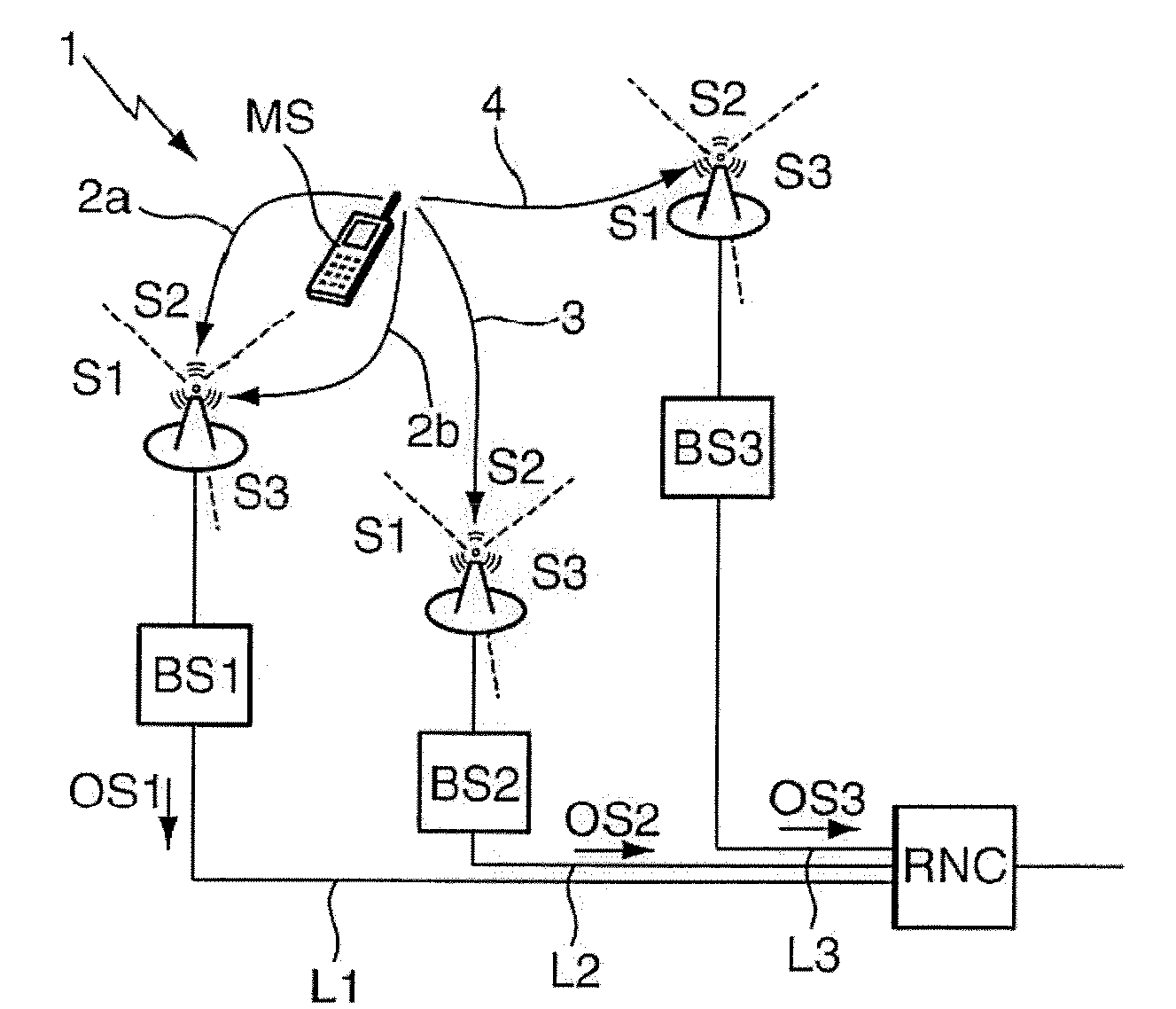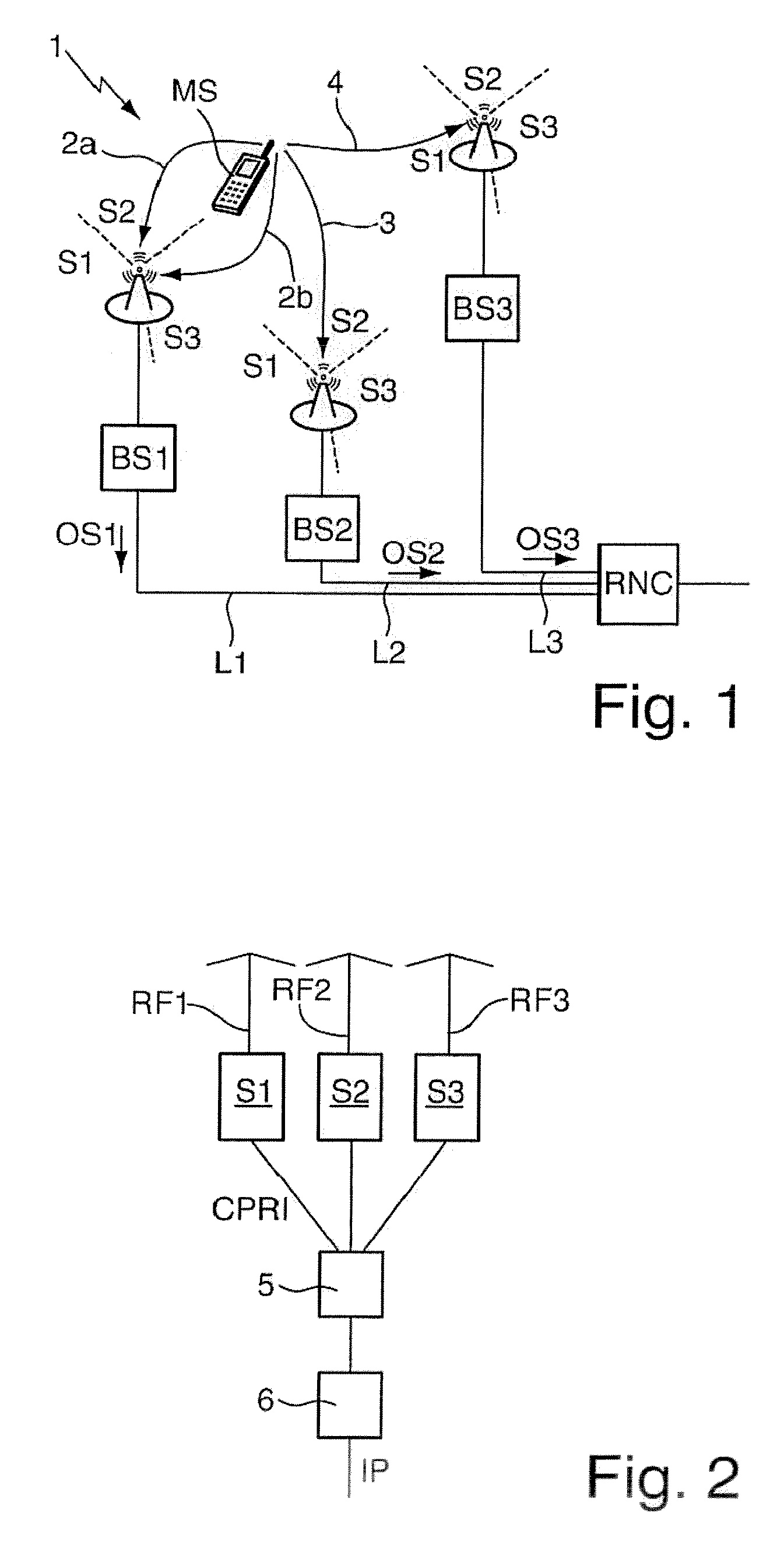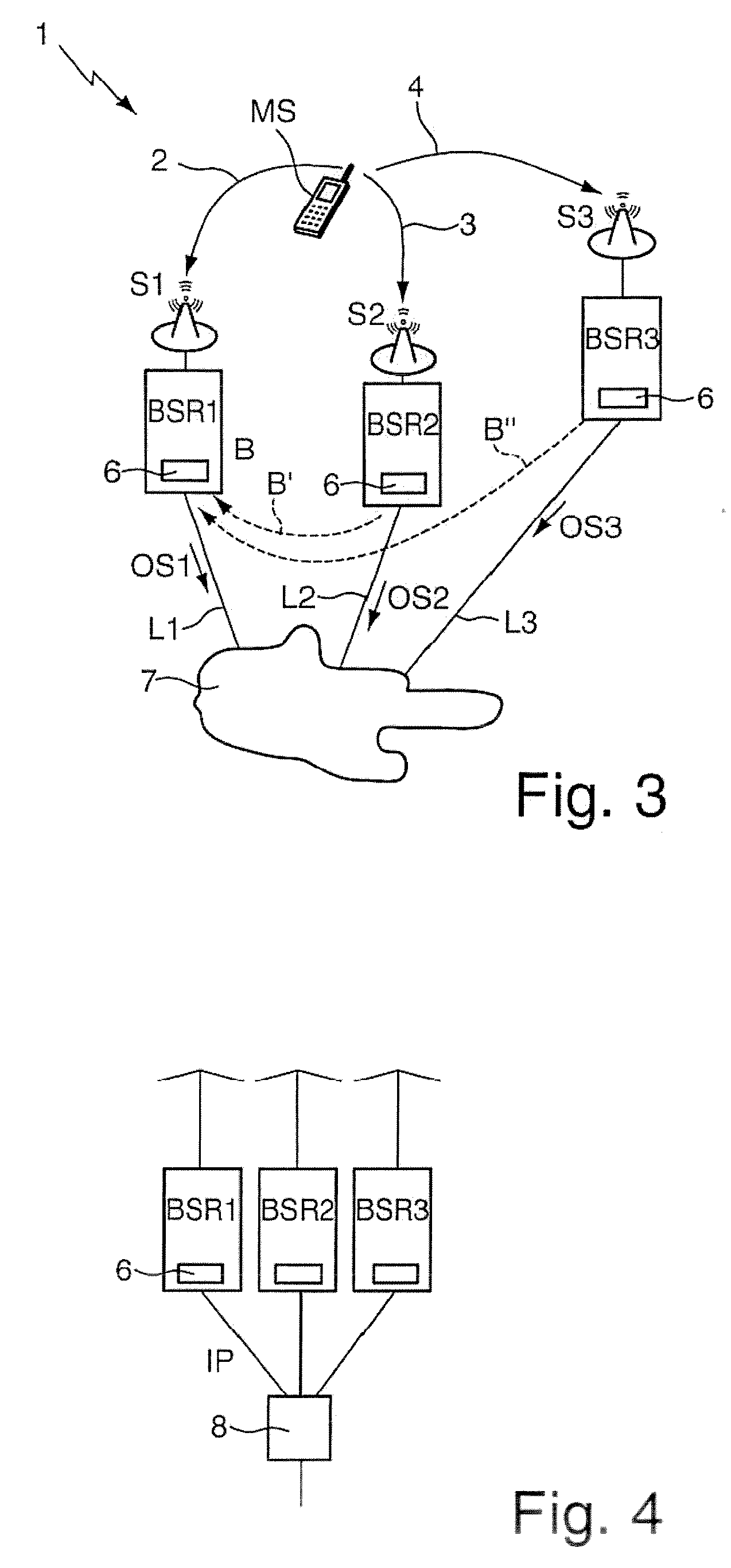Method for recovering a bit stream from a radio signal
a radio signal and bit stream technology, applied in diversity/multi-antenna systems, amplitude demodulation, site diversity, etc., can solve the problems of inability to scale, and inability to meet the requirements of a highly expensive backplane, so as to avoid the different handling of soft and soft handover, avoid softer handover performance, and achieve negligible performance loss
- Summary
- Abstract
- Description
- Claims
- Application Information
AI Technical Summary
Benefits of technology
Problems solved by technology
Method used
Image
Examples
Embodiment Construction
[0037]Throughout the following description, like elements shown the drawings will be referred to with like reference numerals.
[0038]FIG. 3 shows a network 1 which differs from the network 1 shown in FIG. 1 in that it is a non-hierarchical network, the base stations BS1 to BS3 of FIG. 1 being replaced by base station routers BSR1 to BSR3, each being connected via a respective link L1 to L3 to the internet which serves as a transfer device in form of a core / backhaul network 7 within the wireless network 1. More precisely, as is also shown in FIG. 4, each of the three base station routers BSR1 to BSR3 comprises its own channel element 6 and thus produces an output signal OS1 to OS3 of standard IP data which is provided to a standard switch 8 located in the core network 7. The base station routers BSR1 to BSR3 each comprise only a single receiving station S1 to S3 which is connected to a mobile station MS located in the coverage area of each of the three base station routers BSR1 to BSR...
PUM
 Login to View More
Login to View More Abstract
Description
Claims
Application Information
 Login to View More
Login to View More - R&D
- Intellectual Property
- Life Sciences
- Materials
- Tech Scout
- Unparalleled Data Quality
- Higher Quality Content
- 60% Fewer Hallucinations
Browse by: Latest US Patents, China's latest patents, Technical Efficacy Thesaurus, Application Domain, Technology Topic, Popular Technical Reports.
© 2025 PatSnap. All rights reserved.Legal|Privacy policy|Modern Slavery Act Transparency Statement|Sitemap|About US| Contact US: help@patsnap.com



